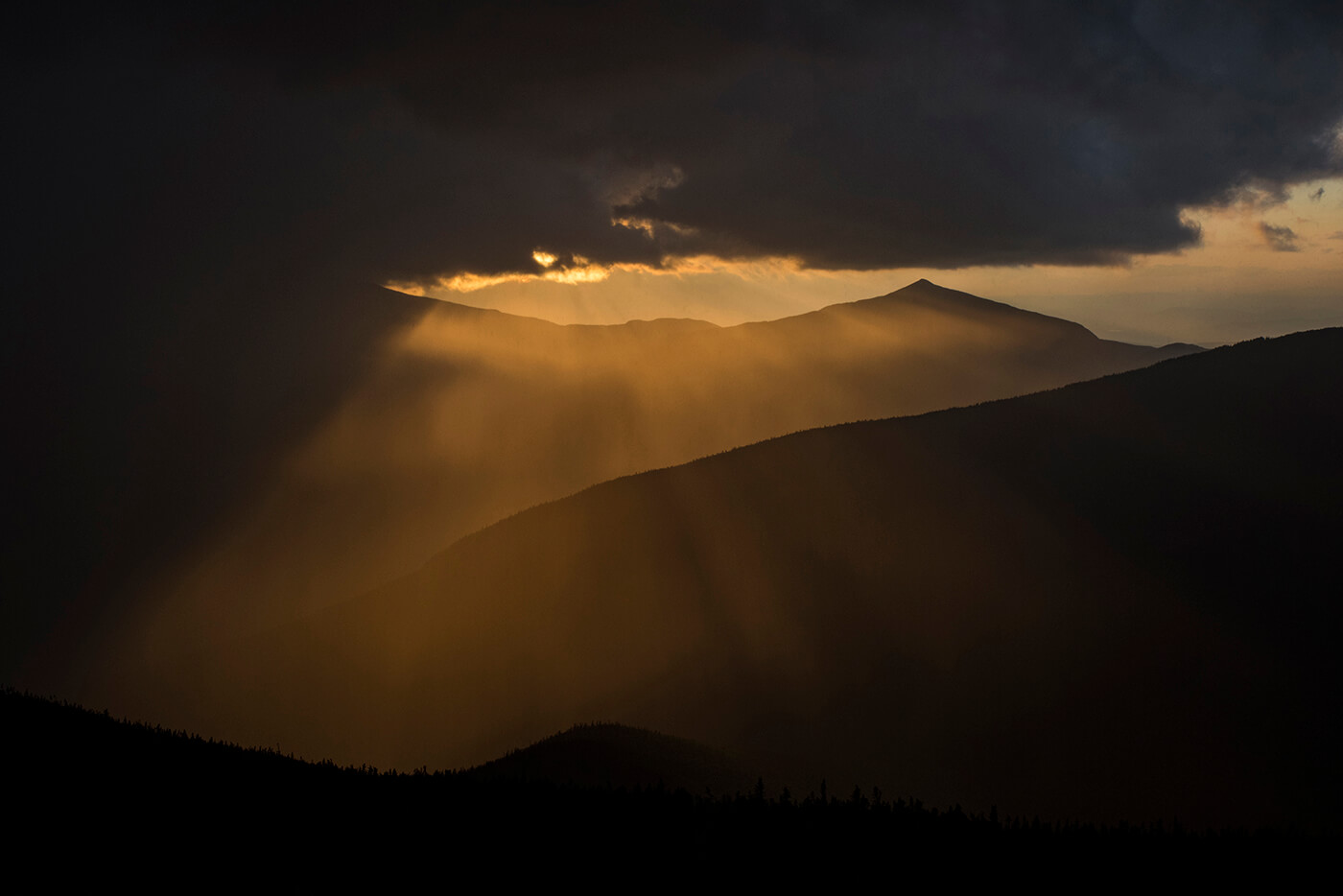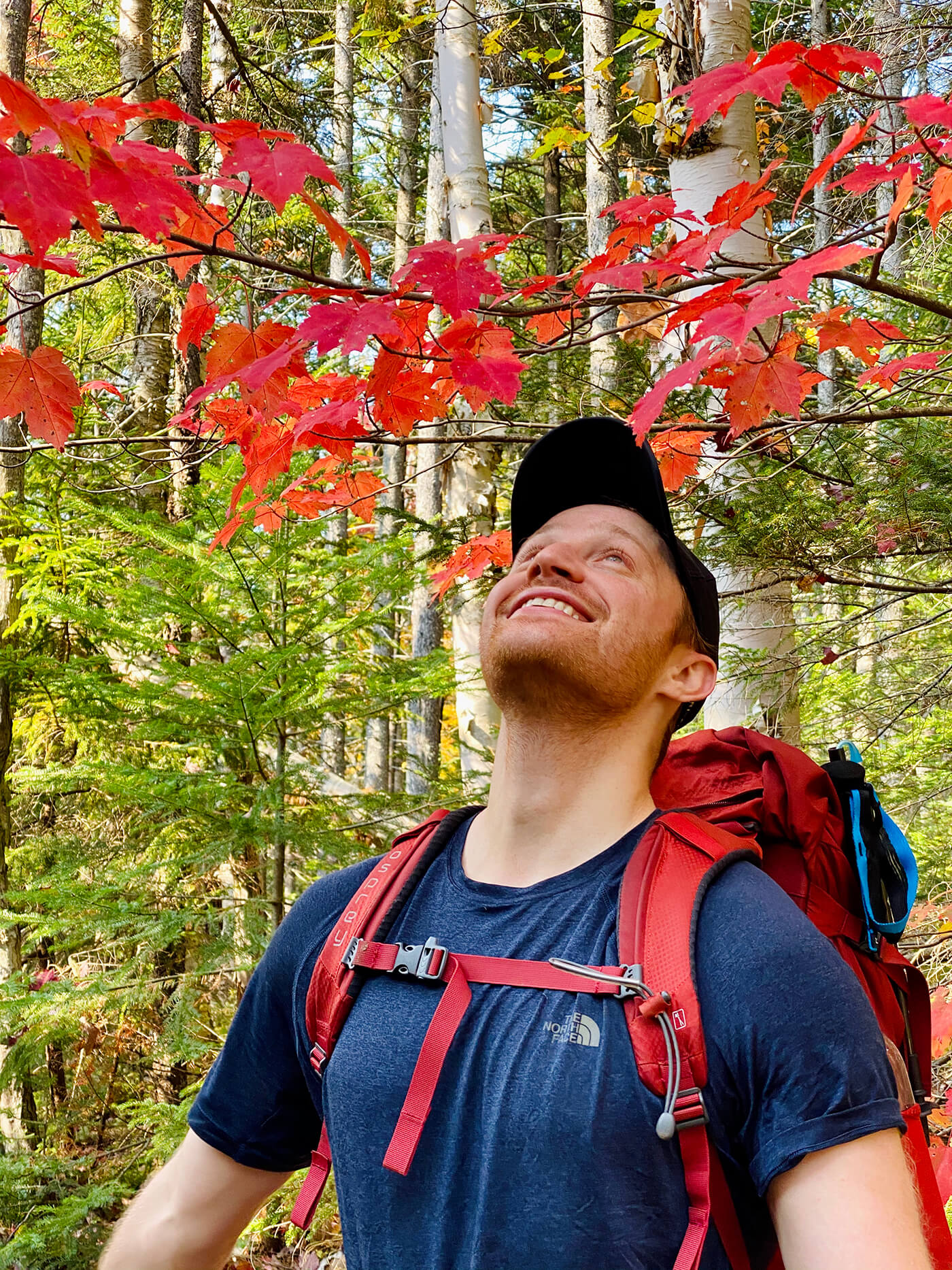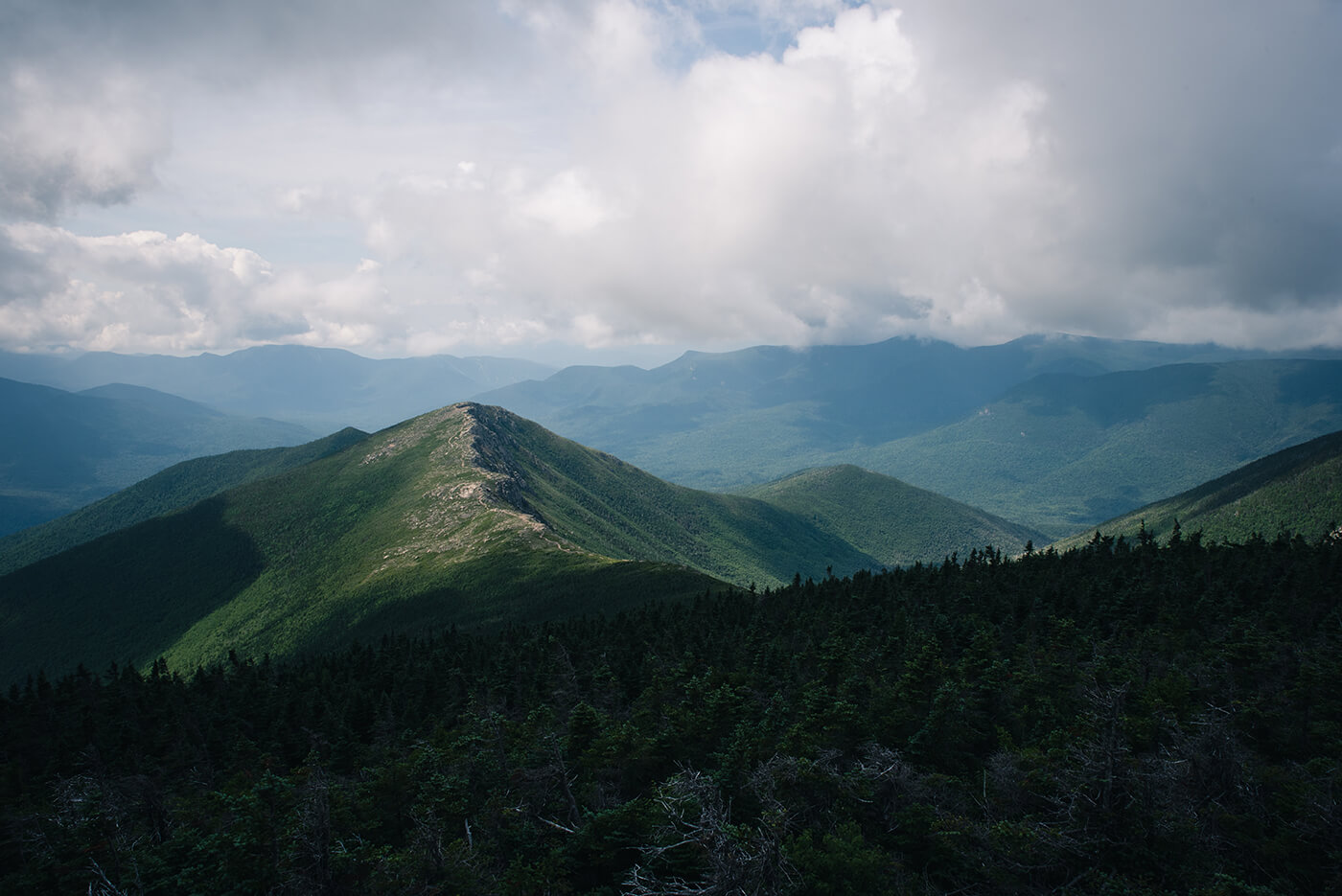

Rays of sun break through the clouds over the Pemigewasset Loop, where the author battled both the terrain and his own mental illness.
I want to smile, but I shiver instead. I should be happy. I’ve been planning my redemption tour of the Pemigewasset (Pemi) Loop, in New Hampshire’s White Mountain National Forest, ever since I had to bail on it last summer because I was pack heavy and suffering the consequences of my own machismo. I’ve corrected for every mistake I made on that trip. I’ve stockpiled precious post-graduate school savings and vacation days. I’ve planned a perfect route with the help of the team at AMC’s Highland Center. All I’ve wanted since I was a kid growing up in New York City was to venture off into the wilderness for a few days by myself. Now, I’m doing it.
But none of it is making me happy.
Instead, the early spring cold is moving through me like a song I used to love listening to but now only reminds me of the person I used to love it with. Fear is running through me like, well, is it enough for me to tell you that my chest is trembling as I write this? Fear leads to anger. I curse myself for not bringing a base layer, for choosing showy yellow trail runners instead of humble black ones, for being scared in the first place, for being 32 instead of 27, for not being more grateful when my father was alive, for not having already mastered everything. The beauty of the trail is that it eliminates distractions, but without distraction all I can think about is how pathetic I am.
I have dealt with anxiety like this—as well as depression and behavioral addiction—since I was 12 years old. Some wake up and think, “Oh, joy!” I wake up and think, “Oh, God.” For me, depression doesn’t mean I don’t enjoy anything; it means I have a hard time doing anything. Meanwhile, anxiety tells me that if I don’t do something my friends will leave me, and the the New York Times headline will read, “Mike Rosen, Total Fraud.” Addiction was an easy way out of both. Addiction helped me feel good until it made me wish I didn’t feel anything at all. That was when I entered 12-step recovery and dove head-first into therapy, medication, meditation, yoga, and just about every “self-care” activity out there. It all helped. I started writing, I performed around the world, and I even earned a master’s degree from an Ivy League university. Still, anxiety is about as logical as a teenager’s hygiene practices, and out here in these mountains—far from my usual supporting cast—I actually have to face what I am feeling.


The author, Mike Rosen, on a fall hike.
That night—after frantically calculating and recalculating how long I’d need to get to the Guyot Campsite—I write a short letter to myself in shivery, broken cursive:
“Dear Mike, no matter what happens do not believe the voice inside your head tomorrow morning.”
Sure enough, the next morning the voice says, “go home,” “unprepared,” “too old.” I clutch the letter. I pack up my gear, and I start thinking of all the things that have helped over the years. I write gratitude lists in my head. I pray. And then I get the idea to conduct a therapy session on myself. It’s a little weird to be sure, but what good is 20 years of therapy if you can’t use it on your own every once in a while?
Clearly, there is a part of me that is freaking out like a father on prom night. So, I ask the questions my therapist would ask: “Can you tell who this part is? Or when it’s from? Or what it wants?”
I sense a 16-year-old me—a kid so scared of what he would become that he turned to addiction to avoid dealing with it—walking with me on the trail. I know more than anything how unsafe he felt in school, how nervous he was about the future, and how badly he just wanted to be comfortable. “What would you want to say to him if you could?” my therapist asks again. I turn inward and tell him, “Listen, I have done all the planning, all the packing, all the training, and I promise I can keep you safe, but I can’t keep you comfortable. If what you need is a warm bed and Netflix, then we need to bail. But if you’re game for an adventure, look up and check out this view.”
I set a new plan. If I can get to Galehead Hut by 6 p.m., I’ll be able to make it to the top of South Twin Mountain and then to Guyot Shelter before nightfall. It won’t be comfortable. But I no longer want to be comfortable. I want to be whole. So, I do what one does on any hike: shut up and walk. I climb Mount Lafayette like someone gave me permission to eat dessert first. I nearly bail again after the 1,000-foot descent from the top of Mount Garfield to the Franconia Brook Trailhead. But I don’t. I keep walking. I’m 45 minutes late to my 6 p.m. cutoff, but by now all my parts are working together. I push up South Twin and settle in at Guyot in time to catch the alpenglow over the Presidential Range. I wake up the next morning and skip up West Bond. I may or may not hit play on Wu-Tang Clan’s Enter the 36 Chambers. I may or may not dance with my 16-year-old self.


The Bondcliff Trail on the Pemi Loop, as seen from Mount Bond.
Later on, as I walk along Bondcliff Trail, I am hungry, tired, thirsty, and dirty—uncomfortable. But I am safe—I am not dying from animal bite or dehydration, I’m not lost, I’m not about to walk 10 miles in the dark—and I am having an adventure. For a kid who spent his whole life in a city, the trail is about more than fresh air. It’s about learning to live in what Robert Bly called the ashes of life, it’s about getting your hands down in the muck of being to see how rich it really is, and, most importantly, it’s about working for it. Getting outdoors has been shown to help us manage anxiety, depression, and even deal with past trauma. So, I rake my hands in the ashes.
I’ve been in recovery for almost eight years, but it is only now—walking raggedly down Bondcliff Trail—that I realize how I’ve overcomplicated both backpacking and my own healing. All you really have to do is stay on the trail. It might be hard. It might even get boring. But what are your other options? What do you think would happen if you just head off in your own direction? You think you’ll bushwack your way to a Four Seasons? Both recovery and backpacking demand climbing one step at a time. You don’t always see the benefit, but sometimes the trail opens, the whole valley is before you, you remember why you started, and you realize that this is what it means to train in not giving up on yourself.